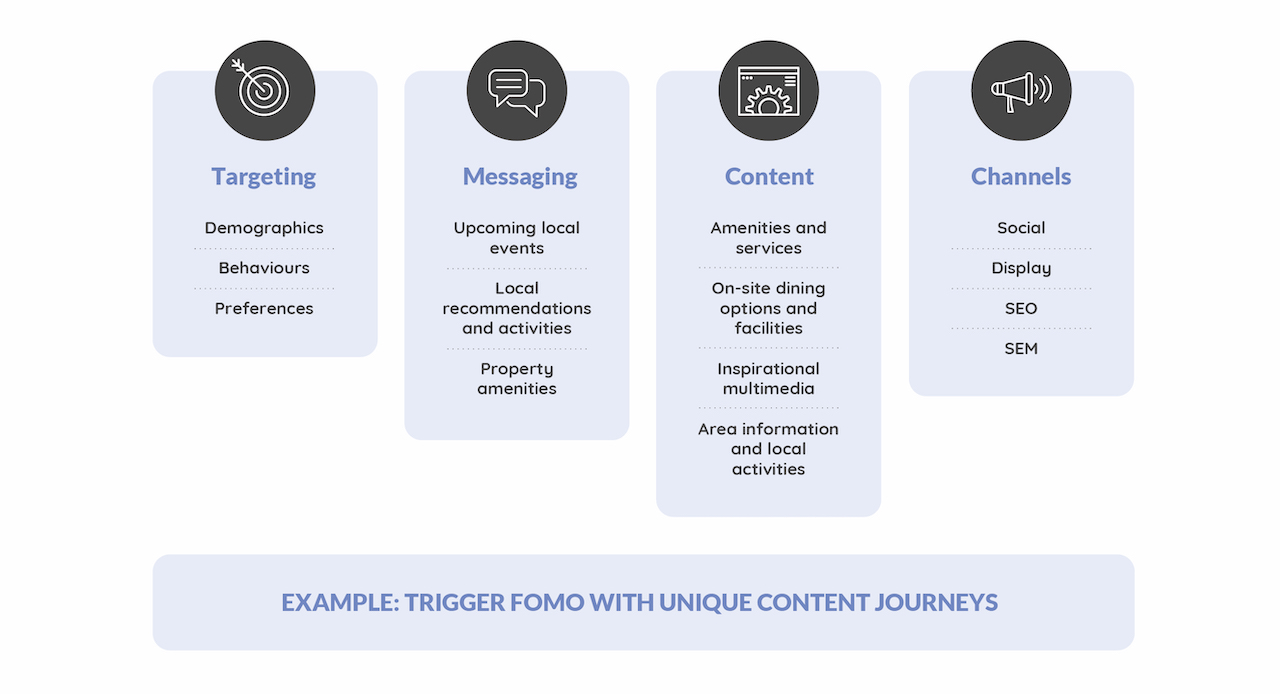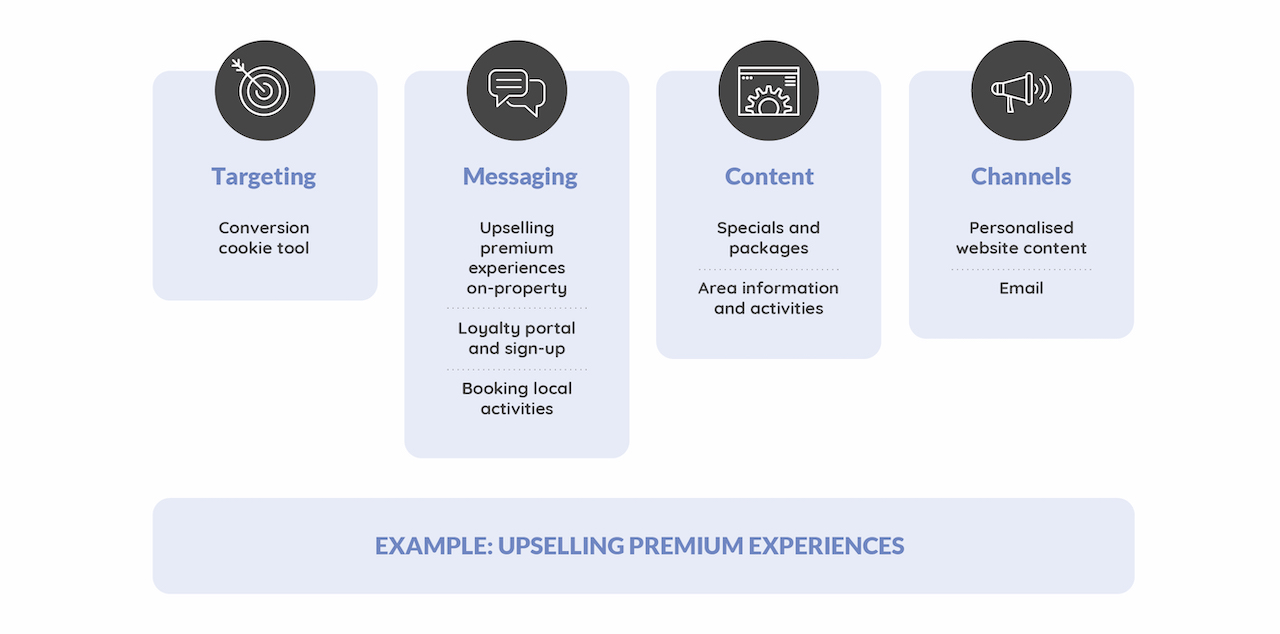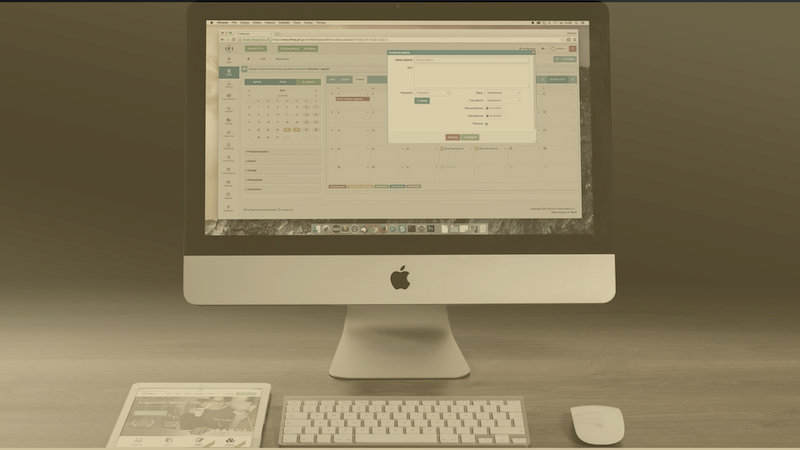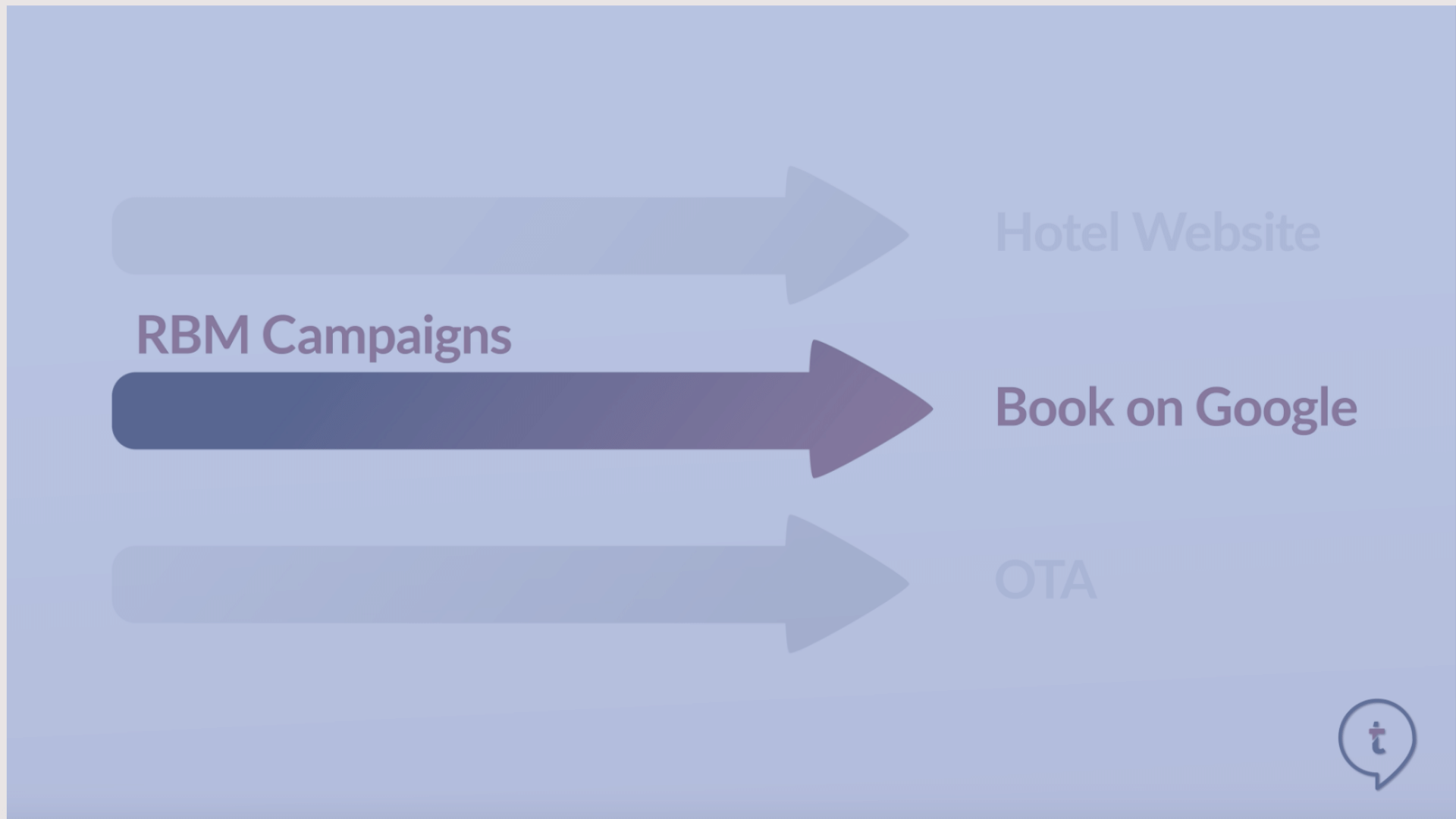Unlocking the power of digital identities within your CRM data
Your hotel CRM is a wealth of useful information about your guests’ digital identities. These guestprints are powerful personal frameworks for conversion-primed marketing strategies.
Personalisation is key to success in the highly competitive world of hotel marketing. When one property does a better job of crafting a message that’s relevant and delivered at the right moment, it not only earns revenue. It also earns the soft trust of the guest and deepens that direct relationship.
As hotel marketers, we understand that intuitively. Even so, there’s a lot that goes into making that sort of “message/moment” fit. Success comes from knowing your guest – and translating that knowledge into resonant messaging that drives results.
And, as technology sits at the centre of daily hotel operations, proper personalisation means utilising the data we have on our guests to create targeted and effective marketing campaigns. This is where customer relationship management (CRM) data comes into play.
A depth of knowledge sits within your hotel’s CRM data, providing clear digital identities that provide the foundation for personalised marketing communications at scale. By analysing guest profiles and identifying patterns and trends in their behaviour, hotels can segment their audiences and create personalised messaging that resonates with each guest. These bespoke communications increase loyalty, higher guest satisfaction, and, ultimately, more revenue.
However, not all guests are the same and their needs change throughout the different phases of their travel journey. In this article, we will explore CRM data's role in creating personalised marketing communications across each of the four phases of travel: dreaming, planning, booking, and experiencing. We’ll provide practical best practices on the ideal targeting, messaging, content and channels, plus best practices on using CRM data to inform your marketing communications.
Understanding your guest's digital identity
Digital identities are made up of three primary elements: demographics (which are relatively static), past behaviours (which evolve over time) and unique preferences (which must be captured by a hotel’s tech stack).
Demographics are relatively static and predictable. Age evolves over time, and most people aren’t changing their hometowns often. These are also the easiest to capture, as demographic details are part of nearly every booking.
Guest behaviour is more dynamic and may change over time. These elements include preferred booking channels, frequently booked room types, typical booking patterns, the average length of stay and on-property spending. This behaviour tends to depend on the type of trip, such as business or leisure, as well as the trip's objective, such as with family or friends.
Guest preferences are less static than demographics but change less often than guest behaviour. These are the nuances that remain somewhat constant throughout different trip types — a person who enjoys golf or eats vegan is most likely to still have that preference no matter what type of trip they’re on. This information can then be used to craft relevant messaging that triggers a desired behaviour.
Guest preferences also inform the functional and emotional benefits a particular profile likes about your property, shaping how best to engage a guest across touchpoints. For example, a hotel may notice that guests who book through a certain channel tend to spend more on-property. This information can then be used for targeted campaigns for bookings from that channel, highlighting specific amenities and on-property services that the specific guest is likely to enjoy. These relevant offers generate non-room revenue for the hotel and improve the guest's on-property stay.
Guest data can then be segmented into a digital identity highlighting each guest’s unique guestprint based on demographics, behaviours, and preferences.
With these digital identities, hotel marketers can better understand their guests' preferences and connect those to specific mindsets along the guest journey with communications tailored to each phase. This level of personalisation can improve guest satisfaction and drive revenue by encouraging repeat bookings and positive reviews that bring more guests to the property.
Targeting guests in the four phases of travel
Guests have different mindsets, needs and expectations depending on their phase of travel. By knowing where your guests are in the travel journey – from dreaming, planning, booking, and experiencing –, you can combine what you know about their digital identities to communicate with better relevancy, empathy, and efficacy.
Each phase presents unique opportunities and challenges, and intuitively understanding the nuances of each is key to crafting marketing messaging and website content that resonates with guests, drives revenue, and increases satisfaction.
Here are some tips on which website content and marketing channels work best for each phase of travel.
Phase 1: Dreaming
The dreaming phase is the most creative point in the guest journey. The guest is considering options, which can mean a variety of things. If it’s a business traveller who frequently stays at your property, she may be dreaming about finally making time for a spa visit. For a casual traveller into food, the focus could be on the property’s proximity to the best restaurants – or perhaps access to unique culinary experiences that only your property can provide.
At this phase, potential guests are scrolling social media, reading travel blogs, watching videos on YouTube, checking TripAdvisor, or asking ChatGPT for local recommendations. To target guests in this phase, hotel owners can use CRM data to identify guest demographics and behaviours, such as age, interests, and travel history.
Messaging during this phase should highlight the hotel's loyalty program and VIP perks and showcase the property's unique features and amenities. Social media, display ads, and search engine optimisation (SEO) are effective channels for reaching guests during the dreaming phase.

In the dreaming phase, success comes from speaking directly to a guest's interests and preferences. For example, if a hotel identifies that a particular guest frequently stays in luxury hotels and enjoys fine dining experiences, they can create a personalised campaign that showcases the hotel's high-end amenities and services, such as a luxury spa or an exclusive dining experience available for a limited time – or only when booking at your property.
These moments must also be embedded with multimedia to help guests visualise what their stay would be like. From on-property stills to 360 walkthroughs, local travel videos and past guest reviews, a combination of mediums will excite guests about their stay – and convince them to sign up for your email newsletter for offers and updates.
Phase 2: Planning
During the planning phase, guests narrow down their options and decide on a destination. They may search for specific amenities, research recommendations on local activities, or look into the weather before packing. They’ve narrowed down their options to a select few properties and are nearly ready to book.
With that in mind, messaging should adjust based on individual guest preferences and typical guest behaviours to capture the booking before it goes to a competitor. Messaging should focus on local events, activities, and property amenities that are likely to appeal to the guest, which are all primed for conversion.

The planning phase should trigger FOMO and entice guests to book. With this objective in mind, create unique content journeys based on guests’ digital identities. Thanks to your CRM’s holistic grasp of guest behaviour and preferences, these journeys showcase local events, activities, and property amenities through personalised email and website content that trigger FOMO and a desire to book.
For example, if a hotel identifies that guests frequently book rooms with views of the city skyline, they can create a campaign that highlights their rooms with the best views and promotes nearby rooftop bars or restaurants with similarly stunning views. They can also use social media channels to showcase photos and videos of the views to entice potential guests.
Unique content journeys are also great for the email sign-ups captured during the dreaming phase. Take what you know about a guest – which pages they visited, how long they engaged on each page – and share a unique content journey highlighting the most compelling value propositions. This will move them faster from planning to booking.
Phase 3: Booking
When guests are ready to book, your messaging shouldn’t get in the way! It should adjust according to a guest’s booking trends, past behaviours and personal preferences. For instance, an abandoned cart re-engagement email would amplify the property’s benefits, focus on what matters most to that specific guest and incentivise the booking with a personalised rate – all based on the hotel’s CRM data.
Generally, messaging during this phase should emphasise the benefits of booking directly, such as lower rates or special offers. It's important to use CRM data to identify guest booking behaviours, such as preferred booking channels and room types, to personalise messaging and encourage direct bookings.

Loyalty programs have long been a powerful revenue tool for hotels. By translating CRM data around guest preferences and behaviours into tactical messaging, hoteliers can highlight loyalty program benefits and encourage new guests to sign up. They can also offer incentives such as discounts or loyalty points to incentivise the guest to book directly with them, saving commissions and capturing the booking before the guest leaves the site.
For example, if CRM data shows that a guest frequently books stays at the hotel for business travel, the hotelier can create messaging that emphasises the benefits of the loyalty program for business travellers, such as exclusive discounts on meeting rooms or complimentary breakfasts. This personalised messaging is more likely to resonate with the guest and encourage them to book with your property rather than elsewhere.
These messages also work for potential guests new to your property. Highlighting the loyalty program's benefits can drive conversion – especially if there’s a bonus for new members that entice them to book. This could be a premium room upgrade for new members that sign up at booking or complimentary breakfast during the stay. The exact offer and wording would be adjusted based on that guest’s digital identity within your CRM.
Phase 4: Experiencing
Once guests are on-site and enjoying their stay, the mission shifts from earning the booking to maximising revenue per booking. This is a critical phase for upselling premium experiences and amenities, such as spa treatments or room upgrades.
Yet, it takes nuance to effectively accomplish this without alienating guests with irrelevant messaging driven by profit. That’s where the guest’s CRM data can inform the best way to engage guests. Messaging can be adjusted based on conversion cookie tools to track guest behaviour and personalise messaging on the hotel's website and within emails and texts.

Upselling premium experiences is a powerful way to drive revenue and improve guest experiences. By using conversion cookie tools to track guest behavior on the hotel's website, hoteliers can create personalised messaging that promotes premium experiences that are likely to appeal to the guest.
For example, if a guest has booked a spa treatment during their stay, the hotelier can create messaging that promotes additional premium experiences, such as a couples' massage or a luxurious room upgrade. This personalised messaging is more likely to resonate with the guest and encourage them to upgrade their stay with premium experiences – but only if that guest happens to be with her partner or on a honeymoon. Otherwise, it would be really bizarre for a solo traveller to get an offer for a couples massage or for a business traveller only here for off-property meetings who would need a luxury suite.
Bringing it all together
The four phases of travel - dreaming, planning, booking, and experiencing - each present unique conversion opportunities and marketing challenges. By leveraging CRM data to align messaging with guest behaviour, preferences and expectations at each phase, communications are more likely to connect with guests at the ideal moment. Those small touches add up to big wins over the lifetime of a guest relationship.
When leveraging your CRM’s digital identities, keep these five best practices in mind:
- Personalise Your Messaging: Personalisation is the key to creating messaging that truly resonates with your guests. By leveraging the power of CRM data, you can better understand your guests' preferences and behaviours, allowing you to create messaging that speaks directly to their unique needs and desires.
- Use Eye-Catching Visuals: Creative multimedia visuals are a powerful way to capture your guests' attention and convey your message. Whether it's high-quality photos of your property or engaging graphics highlighting your amenities, visuals are essential to creating compelling campaigns.
- Highlight Your Unique Selling Proposition: What sets your property apart from the competition? Whether it's your location, amenities, or guest service, highlighting your unique selling proposition (USP) is essential to creating campaigns that truly stand out. And remember: different guests have different needs, so align your chosen USPs with guest needs, preferences and expectations.
- Create Urgency: Urgency is a powerful way to encourage guests to book – especially during the Planning and Booking phases. Whether it's a limited-time offer or a message emphasising the importance of booking early, creating urgency can effectively drive bookings and increase revenue.
- Test and Refine Your Campaigns: Finally, testing and refining your campaigns over time is important to ensure they are as effective as possible. You can continually optimise your campaigns and drive even better results by using A/B testing to compare the effectiveness of different messaging, visuals, and offers.
Ultimately, targeted marketing communications that address each guest's needs, preferences and expectations will foster satisfaction, drive revenue, and build loyalty for your hotel. And, as you further refine your guests’ digital identities within your CRM, the benefits will grow and compound over time!For more information on unlocking the power of digital identities within your CRM data, click here.
About the Author

Global Creative Director, Cendyn
Eric Reece leads the creative efforts for Cendyn’s entire client portfolio. He is responsible for ensuring the highest standard of excellence for all creative work across the company’s digital skill sets. Additionally, Eric provides design and strategic guidance for website projects to both internal and external stakeholders. Before joining Cendyn, Eric was the Creative Director for NextGuest Innovations Lab. He was also the Creative Director for Sabre Hospitality Solutions for eight years. Eric has extensive experience leading creative teams working with various national and international hotelier brands, including Marriot, Loews, Mandarin Oriental, Fontainebleau, Four Seasons, and Waldorf Astoria. Eric follows the philosophy that good design is obvious; great design is transparent.
Cendyn in a Member at techtalk.travel
Also make sure to find these supporting content elements of the editorial Digital Identities in Hospitality
- PODCAST | Digital Identities In Hospitality
- INFOGRAPHIC | Coming Soon
- VIDEO | Digital Identities in Hospitality





![V03: The History of Hotel & Travel Technology | [Updated] Infographic](https://www.techtalk.travel/storage/app/uploads/public/63f/e6f/ec8/63fe6fec80447817849943.jpg)



Create an account to access the content.
Get access to Articles, Video's, Podcasts, Think Tanks, Infographics and more.
Click “Sign In” to accept our
Terms of Service Privacy Policy